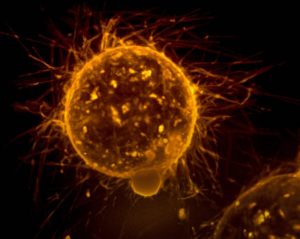How Stem Cells May Hold the Key to Timeless Health!
How Stem Cell Niches Impact Aging
Aging, an intrinsic part of the human experience, has been a subject of fascination, concern, and relentless pursuit for centuries. The quest for eternal youth has fueled scientific inquiry and inspired myths, legends, and countless potions and treatments. While the idea of a “fountain of youth” remains a tantalizing dream, modern science has brought us closer than ever to understanding the fundamental mechanisms behind aging and, in particular, the role of stem cells.
Chapter 1: The Nature of Stem Cells
Stem cells, often described as the body’s master builders and repairers, hold a unique position in the realm of biology. These extraordinary cells have the remarkable ability to divide and renew themselves indefinitely. Moreover, they possess the capacity to differentiate into a myriad of specialized tissues needed during development and to repair adult tissue. In essence, stem cells can be considered immortal, as they continuously recreate themselves and contribute to tissue regeneration throughout an individual’s lifetime.
Chapter 2: The Aging Paradox of Stem Cells
Despite their incredible regenerative potential, stem cells are not exempt from the aging process. They, too, experience the passage of time and undergo changes as an organism grows older. Over the years, these changes gradually erode their ability to effectively maintain tissues and organs. While stem cells maintain their ability to divide and regenerate, their efficiency and potency decline with age. This paradox begs the question: How can cells that seemingly possess the power of immortality become less effective as an organism ages?
Chapter 3: The Role of the Stem Cell Niche
The answer to this riddle lies within the microenvironment or “niche” that surrounds stem cells. The niche serves as the habitat, control center, and protector of these vital cells. It provides the signals, cues, and support necessary for stem cells to carry out their regenerative functions. A crucial aspect of the niche’s role is its communication with stem cells. When an injury occurs, for example, the niche sends specific signals to nearby stem cells, directing them to form new tissue and facilitate the healing process.
Chapter 4: Stem Cells and Their Niche – Partners in Aging
To understand how stem cells age, we must examine the intricate interplay between these cells and their niche. Stem cells and their niche engage in a dynamic and symbiotic relationship that is crucial for maintaining stem cell potency throughout an organism’s lifetime. However, as an organism ages, the balance within this relationship shifts, impacting stem cell function.
Chapter 5: The Salk Institute’s Pioneering Research
In a groundbreaking study published in Nature on May 23rd, researchers at the Salk Institute for Biological Studies embarked on a journey to uncover the mysteries of stem cell aging. Led by senior investigator Leanne Jones, the team sought to unravel the intricate web of biological events that dictate stem cell behavior within their niche.
Chapter 6: The Fruit Fly Connection
Remarkably, the researchers employed the humble fruit fly, Drosophila melanogaster, as their model organism. The choice of the fruit fly is not arbitrary but driven by the remarkable similarities between its stem cells and those found in humans. Fruit flies have proven to be an invaluable tool for gaining insights into the biological processes that underpin aging and stem cell function.
Chapter 7: Let-7 – The Aging Catalyst
One of the pivotal discoveries made by the Salk Institute researchers was the role of a molecule called let-7. This molecule, classified as a microRNA, plays a critical role in regulating the production of proteins from RNA. Significantly, let-7 is not confined to fruit flies but is also found in humans and other species. Its function extends beyond stem cell aging, as it plays a role in timing developmental events during an organism’s growth.
Chapter 8: The Domino Effect of Aging
The story of let-7 unfolds as a domino effect within the aging stem cell niche. The rise in let-7 levels triggers a cascade of events that influence a protein called Imp. This protein, known as Imp, is responsible for safeguarding another molecule called Upd, secreted from a key region of the niche. Upd, in turn, plays a pivotal role in promoting signaling that keeps stem cells active and in close contact with the niche. However, as an organism ages, the increasing expression of let-7 ultimately leads to reduced Upd levels. This decrease translates to fewer active stem cells within the niche.
Chapter 9: Turning Off the Aging Switch
Perhaps the most remarkable revelation from the Salk Institute’s research is that they were able to reverse this age-related loss of stem cells by increasing the expression of Imp. In essence, they discovered a way to turn off the aging switch. This discovery holds immense promise for potential interventions in human aging.
Chapter 10: Implications for Future Treatments
The implications of this groundbreaking research are profound. It opens new avenues for drug development aimed at stimulating an individual’s own stem cells to combat the effects of aging. Potential strategies include preventing the elevation of let-7, blocking Upd destruction, or increasing Imp expression. These approaches have the potential to rejuvenate aging stem cells and revitalize their niches.
Chapter 11: A Glimpse into the Future
While the research was conducted using fruit flies, the parallels between fly and human stem cell behavior are striking. The secrets unlocked by these tiny insects could potentially translate into interventions that help us defy the passage of time and unlock the secrets of a longer, healthier life.
The study conducted at the Salk Institute represents a significant step forward in our understanding of the intricate world of stem cell aging and its connection to the microenvironment or niche. The discovery of the role of let-7 and Imp in the aging process opens new horizons in the field of regenerative medicine and age-related disease treatments. While the concept of a true “fountain of youth” remains elusive, the secrets unveiled by this research bring us closer than ever to the possibility of extending not just our lifespan but our healthspan, too. In the not-so-distant future, we may find ourselves equipped with the knowledge and tools to embrace the full potential of our body’s natural regenerative abilities.








